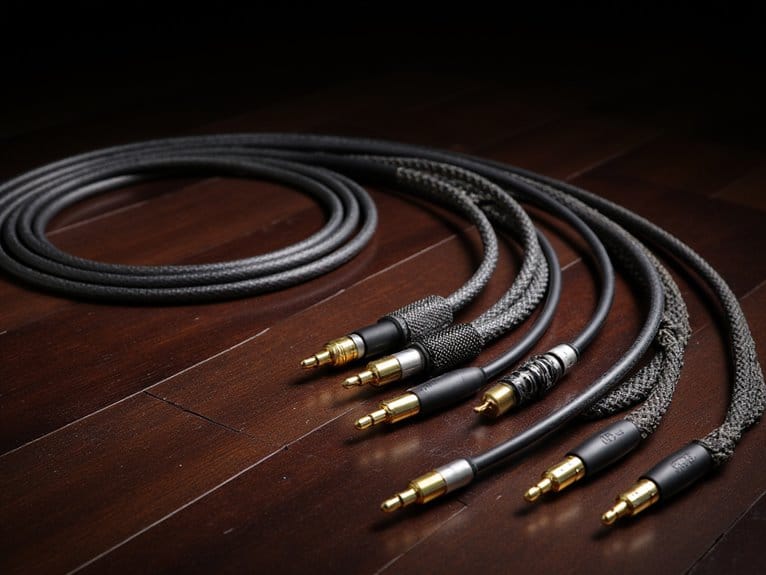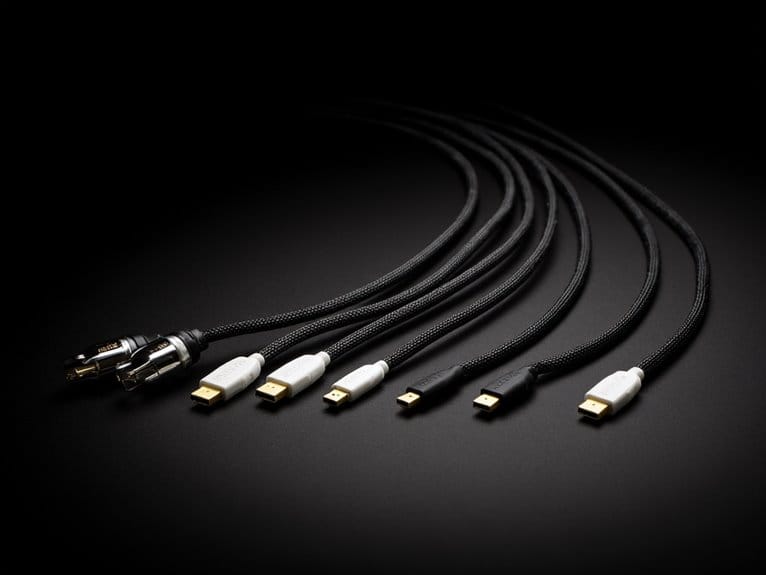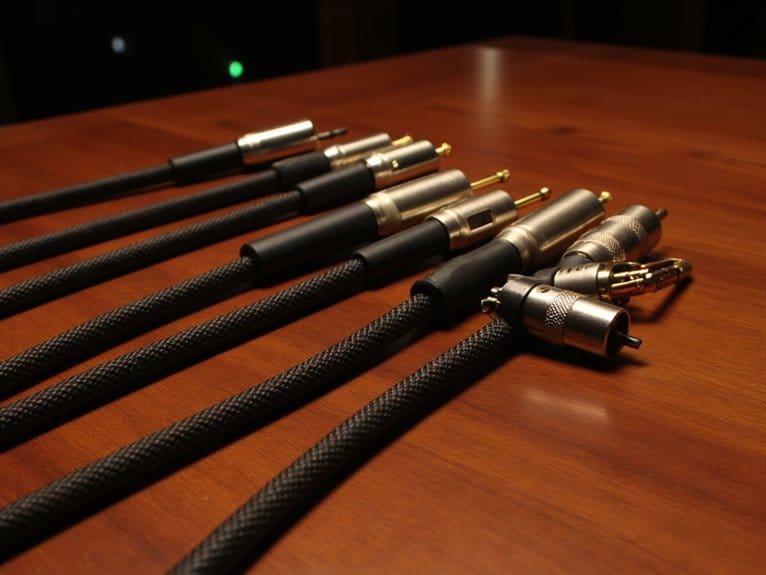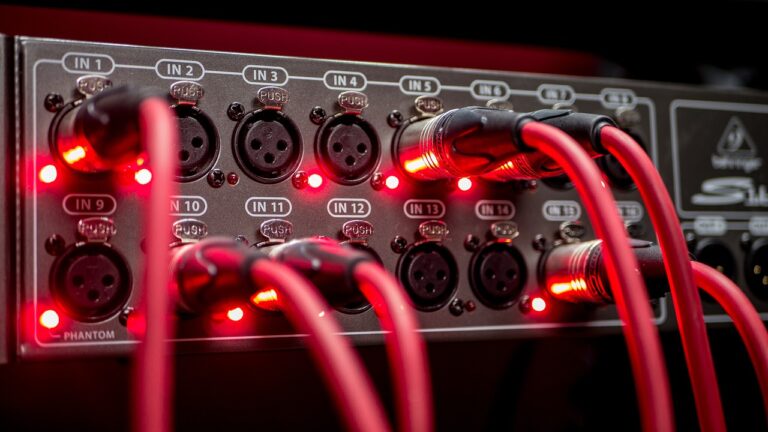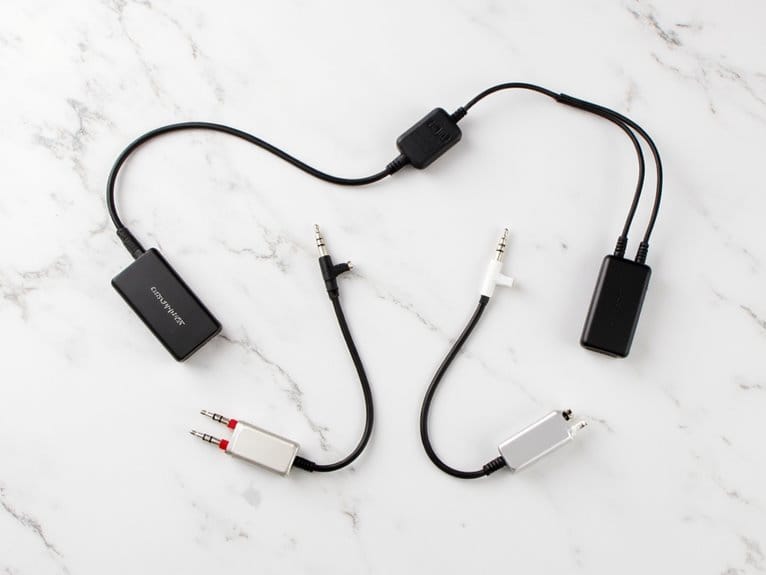Instrument Cable Vs. Speaker Cable: Clearing up Common Confusions
Hey there! Are you feeling a bit puzzled when it comes to the differences between instrument cables and speaker cables? No worries at all, my friend. We've got your back! Today, we're going to dive deep into the world of cables and clear up all those common confusions that tend to swirl around these two types of cables.
We are supported by our audience. When you purchase through links on our site, we may earn an affiliate commission, at no extra cost for you. Learn more.
So, let's get started, shall we? First things first, understanding the purpose, construction, and implications for sound quality of these cables is key to choosing the right one for your needs. We want you to make an informed decision, after all!
Now, picture this: you're jamming away on your guitar, pouring your heart and soul into each note. You're using an instrument cable to connect your guitar to your amplifier. But what if you accidentally grabbed a speaker cable instead? Uh-oh! That would be like trying to fit a square peg into a round hole, my friend. Instrument cables are specifically designed to carry the delicate signals from your instrument to your amplifier, while speaker cables are built to handle the powerful signals that flow from your amplifier to your speakers. It's like comparing a delicate ballerina to a heavyweight boxer. They each have their own unique purpose and strengths.
Now, let's talk sound quality, because who doesn't want their music to sound as crisp and clear as possible? Instrument cables have a smaller gauge and a higher impedance, which means they're great at preserving the integrity of those delicate signals from your instrument. On the other hand, speaker cables are built to handle higher power levels, with a larger gauge and lower impedance. They're like the sturdy foundation that supports the raw power of your amplifier. So, using the right cable for the right purpose can make a world of difference in how your music sounds.
But hey, it's not just about knowing the differences between these cables. We also want to help you take care of them properly. Just like anything else, cables need a little TLC every now and then. Keep them coiled neatly when you're not using them, avoid bending them too sharply, and give them a gentle wipe down every now and then. By giving your cables some love and attention, you'll ensure they perform at their best for years to come. Additionally, it’s crucial to store your xlr cables in a cool, dry place to prevent any damage from moisture or extreme temperatures. If you notice any fraying or wear, it’s best to address those issues promptly to avoid further problems. Regularly checking your cables for any signs of stress will help maintain their quality and ensure optimal performance.
So there you have it, my friend. We've cleared up those common confusions surrounding instrument cables and speaker cables. Now you can confidently choose the right cable for your musical adventures. Go forth and unleash your audio innovation!
The Purpose of Instrument Cables
The purpose of instrument cables is to transmit the electrical signals generated by your instrument to the amplifier or audio system. These cables play a crucial role in ensuring that your instrument's sound is accurately reproduced and amplified. They are designed to carry the low-level signals produced by your instrument's pickups or microphones, and deliver them with minimal interference or signal loss. Instrument cables are typically shielded to protect against electromagnetic interference and noise, which can degrade the quality of the signal. They also feature durable connectors that provide a secure and reliable connection between your instrument and the amplifier. When selecting an instrument cable, it is important to consider factors such as cable length, thickness, and overall build quality to ensure optimal performance and signal integrity.
Understanding Speaker Cables
To understand speaker cables, you need to know their purpose and how they differ from instrument cables. Speaker cables are designed to carry electrical signals from an amplifier to loudspeakers, ensuring efficient and accurate sound reproduction. Unlike instrument cables, speaker cables have larger wire gauges to handle high power levels without significant signal loss or distortion. The wire gauge of speaker cables is typically measured in American Wire Gauge (AWG), with lower numbers indicating thicker wires. Thicker wires reduce resistance and allow for better transmission of power. It is also important to consider the length of the cable when choosing speaker cables, as longer lengths require thicker wires to maintain signal integrity. Additionally, speaker cables often have connectors specifically designed for speaker connections, such as banana plugs or spade connectors, making them easy to connect and disconnect. Understanding the purpose and features of speaker cables will ensure optimal performance and clarity in your audio system.
Key Differences in Construction
When choosing between instrument cables and speaker cables, it's important to understand the key differences in their construction. Instrument cables are designed to carry the electrical signal from your instrument to an amplifier or recording device. They are typically shielded to minimize noise and interference. Speaker cables, on the other hand, are used to connect amplifiers or audio receivers to speakers. They are typically unshielded and have thicker gauge wires to handle the higher power levels required for driving speakers. The construction of instrument cables usually consists of a center conductor surrounded by an insulating material, a shield, and an outer jacket. Speaker cables, on the other hand, typically have two conductors, one positive and one negative, often separated by insulation. Understanding these construction differences will help you choose the right cable for your specific needs.
Implications for Sound Quality
Choosing the right type of cable can have a significant impact on the sound quality of your instrument or speaker setup. When it comes to sound quality, instrument cables are designed to transmit the electrical signals from your instrument to the amplifier or audio interface with minimal interference or loss. They are shielded to protect against outside interference, which can result in a cleaner and more accurate sound reproduction. On the other hand, speaker cables are specifically designed to carry the amplified audio signal from the amplifier to the speakers. They have thicker gauge wires to handle higher power levels without signal degradation. Using instrument cables for speaker connections can lead to loss of power and distortion. In contrast, using speaker cables for instrument connections can result in dull and muffled sound. It is crucial to choose the appropriate cable type for your specific application to ensure optimal sound quality.
Potential Risks of Misusing Cables
Using the wrong type of cable for your instrument or speaker setup can pose potential risks that may affect the performance and longevity of your equipment. The main risk is signal loss, which can occur when using an instrument cable instead of a speaker cable. Instrument cables are designed for low impedance signals, while speaker cables are designed for high impedance signals. Using an instrument cable for your speakers can lead to a significant reduction in sound quality, as the cable may not be able to handle the power required to drive the speakers. Additionally, using a speaker cable for your instruments can result in a weaker signal reaching your amplifier, leading to a loss of tone and overall performance. It is crucial to use the correct cable type for your specific setup to prevent these risks and ensure optimal performance and longevity of your equipment.
Choosing the Right Cable for Your Needs
To ensure the best performance for your setup, it is essential to select the appropriate cable based on your specific needs. When choosing between an instrument cable and a speaker cable, it is crucial to understand the differences and consider the requirements of your audio equipment. Instrument cables are designed for transmitting the low-level signals from instruments such as guitars or keyboards to amplifiers or audio interfaces. They have a shielded construction to minimize interference and ensure optimal signal quality. On the other hand, speaker cables are specifically designed for connecting amplifiers to speakers. They have a thicker gauge wire to handle the higher power levels required for driving speakers. By understanding the purpose and specifications of each cable type, you can make an informed decision and choose the right cable for your audio needs.
Tips for Proper Cable Maintenance
Maintaining your cables properly is key to ensuring their longevity and optimal performance for your audio setup. To keep your cables in top condition, here are some essential tips for proper cable maintenance:
- Inspect regularly: Regularly check your cables for any signs of damage, such as frayed wires or loose connectors. Replace any damaged cables immediately to prevent further issues.
- Coil and store properly: Always coil your cables neatly using the over-under method to prevent tangling and kinks. Store them in a clean and dry environment, preferably in a cable bag or case, to protect them from dust and moisture.
- Avoid excessive bending: Excessive bending can strain the internal wires and lead to signal loss or even cable failure. Whenever possible, use cable management solutions to minimize bends and twists.
- Clean connectors: Dirty or oxidized connectors can affect the quality of your audio signal. Regularly clean your cable connectors using a contact cleaner or isopropyl alcohol to maintain optimal conductivity.
Conclusion: Ensuring Optimal Performance
To ensure optimal performance, it is important to properly care for and regularly inspect your cables. By following these steps, you can maximize the lifespan and functionality of your instrument and speaker cables. Firstly, make sure to coil your cables properly, avoiding kinks and twists that can damage the internal wiring. Additionally, store your cables in a clean and dry environment to prevent corrosion and other forms of damage. Regularly inspect your cables for any signs of wear, such as frayed or exposed wires, loose connections, or damaged connectors. If any issues are found, repair or replace the cables immediately to maintain optimal performance. By taking these precautions, you can ensure that your cables deliver the best sound quality and reliability for your musical endeavors. In addition to caring for your instrument and speaker cables, consider investing in quality wireless headphone options for added convenience. These headphones can offer freedom of movement while still delivering excellent sound quality, enhancing your overall listening experience. Just remember, even with wireless devices, regular maintenance and monitoring are crucial to ensure longevity and optimal performance.
Conclusion
In conclusion, understanding the differences between instrument cables and speaker cables is crucial for achieving optimal sound quality and avoiding potential risks. Instrument cables are designed to carry the signal from instruments to amplifiers, while speaker cables are used to connect amplifiers to speakers. The key differences lie in their construction and impedance levels. By choosing the right cable for your needs and properly maintaining it, you can ensure optimal performance and longevity of your equipment.


